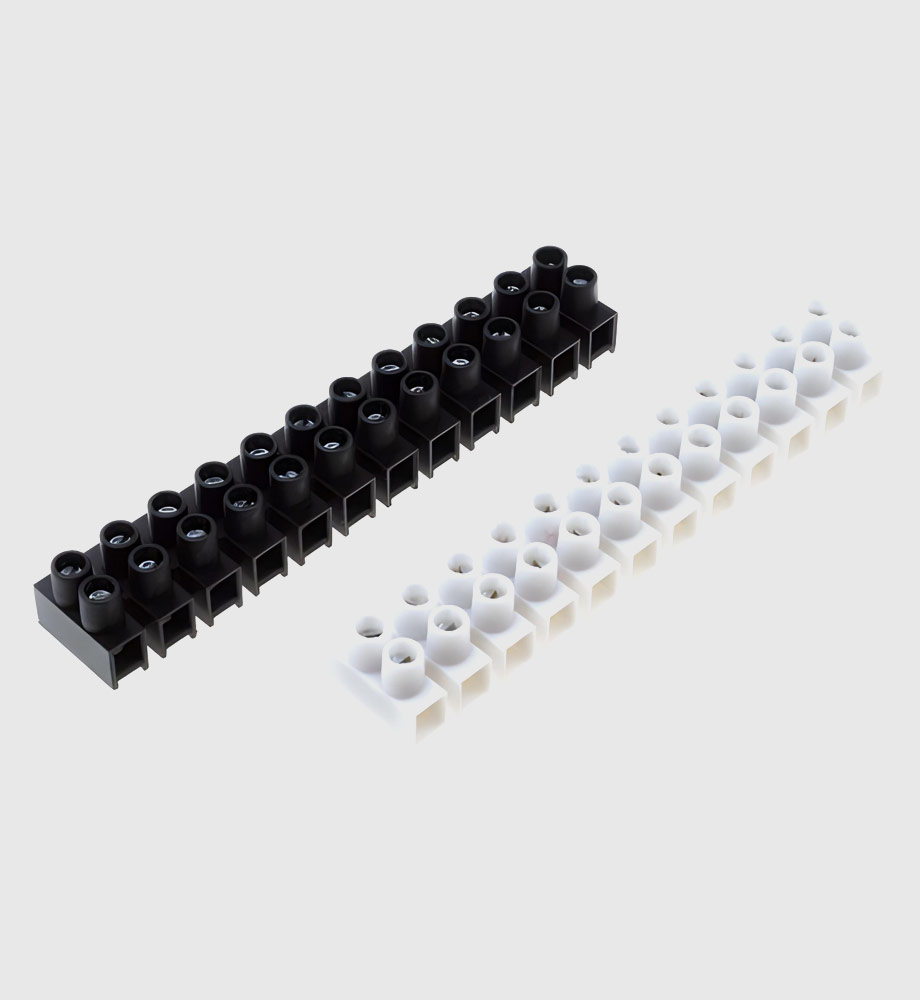Key Features
- Insulated Housing: Bases made from Bakelite (phenolic) or PBT, which are highly insulating and fire-resistant.
- Mounting Format: Commonly DIN-rail mountable for industrial racks; modular strip design.
- Connection Types: Screw-down clamps, spring clamps, or push-in connectors for copper wires.
- Barrier Design: Many include removable partitions (barriers) to prevent accidental shorts between adjacent terminals.
Benefits
- Safe Wire Termination: Provides a neat, tactile-proof cover over live wire connections.
- Ease of Maintenance: Wires can be disconnected and reconnected without altering the circuit layout.
- Customization: Blocks can be mixed (different amperages, colors) to match wiring schematics.
Applications
- Control Cabinets: Internal wiring junctions in PLC panels, distribution boards.
- Motor Control Centers: Grouping incoming power and outgoing motor leads.
- Lighting Systems: Neutral and ground bus assembly in luminaires.
Technical Specifications
- Material: Housing from phenolic resin or high-grade plastics (PBT).
- Current Rating: Often 5–30 A per terminal, depending on gauge.
- Voltage Rating: Up to 600–1000 V in high-insulation blocks.
- Flame Retardant: Many bases UL94 V0 rated; meets V-2 at minimum.
Unique Selling Points (USPs)
- Premium Insulators: Use of Bakelite/PBT ensures “unbreakable, non-hygroscopic, highly insulating” performance.
- Touch-Proof Design: Closed housing prevents finger contact with live terminals.

